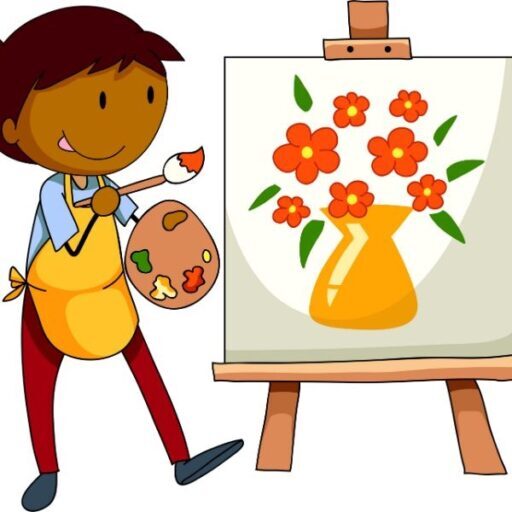Children’s artwork is priceless because it reflects the artist’s inner world and conveys the child’s thoughts and feelings. Everything from a baby’s scribbles to a teenager’s detailed drawing has a tale to tell.
 But have you ever pondered the deeper meanings behind their works? And how can you showcase it in a way that honors the creator’s development?
But have you ever pondered the deeper meanings behind their works? And how can you showcase it in a way that honors the creator’s development?
Discover some useful strategies for presenting children’s artwork by delving into the psychology behind it.
Children’s artwork is a window into their world, revealing their innermost feelings and thoughts. It’s a way of letting their thoughts, feelings, and experiences out into the open.
So, from their paintings and drawings, what can you infer? Here are some ideas:
Expressing Feelings: When words fail, children often express themselves creatively.
While dark hues and scribbly lines may convey despair or anger, bright ones and big, strong strokes could represent joy and pleasure. By noticing these signs, you may learn a lot about your child’s emotional state.
Children’s Artwork Is a Reflection Of Their Creativity And Imagination. Their pictures feature imaginative beings and places that demonstrate their creative imagination.
Ask them free-form inquiries like “Tell me about this picture” to stimulate their imagination. Why did you decide to sketch that?
This not only demonstrates that you’re engaged, but it also gives them practice in communicating with an audience.

Children’s Artwork Is A Window Into Their Cognitive Development. The capacity to sketch familiar objects or to construct increasingly complex compositions are only two examples of how their drawing skills could develop over time.
Acknowledge their development and provide helpful criticism to encourage their creative growth.
Now that we know why kids create art, we can look at how to showcase their creations best to give them credit for their hard work and a sense of accomplishment.
Make a Special Place to Showcase Your Child’s Artwork: Create a special place in your home to display your child’s artwork.
It could be a section of their bedroom wall, a bulletin board in the corridor, or even a picture frame in the living room.
This gives a strong signal that their efforts have been noticed and appreciated.
The Artwork Should be Displayed on a Rotating Basis. You should change out their artwork frequently so it doesn’t take over the room.
Select a handful of works to showcase for a time frame, and then replace them with fresh works at regular intervals.
This will keep the screen looking new and help your kid track his or her development over time.
Let Your Child Help Choose the Art to Display. Make them a part of the decision-making process by asking for their input on which artwork to showcase.
Inquire as to which works they enjoy the most or are most pleased with. This furthers their confidence and sense of independence.
Support Your Child’s Artistry. As a parent or caretaker, you are responsible for encouraging your child by commenting positively on his or her artwork.
Recognize their hard work, originality, and style. Don’t judge their efforts by your standards or criticize their methods.
Use statements like “I love the colors you used in this painting” or “You have such a vivid imagination!” to boost their confidence.
Mark the Occasions. Honor the major steps in your child’s artistic development.
Showcase their accomplishments with a framed work of art or a miniature gallery.
This inspires them and gives them more confidence to pursue their artistic interests.
Presenting Your Children’s Art!
The artwork of children is a window into their developing personalities and imaginations.
We may encourage their artistic growth and make indelible memories by contemplating the motivations behind their work and showcasing it with care and enthusiasm.

